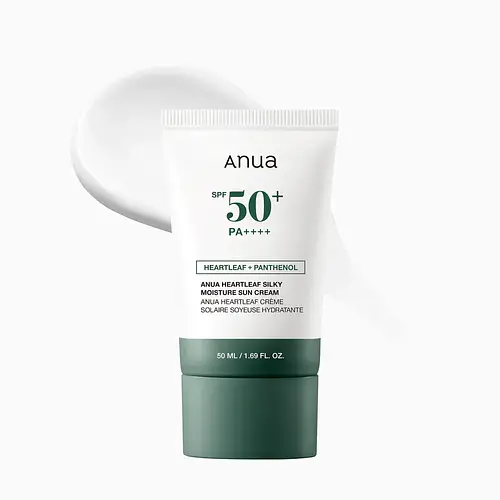Anua Heartleaf Silky Moisture Sun Cream SPF 50+ Versus Vichy Protection Idéal Soleil Mattifying Sun Fluid For Face SPF 50
Updated on June 05, 2025
Overview
What they are
These products are both sunscreens. They have a total of 0 ingredients in common
Cool Features
They both contain exfoliants, SPF and Vitamin E
Suited For
They're both likely to be good for anti aging, dry skin, brightening skin, sensitive skin and scar healing
Free From
They both do not contain any harsh alcohols, common allergens, oils, parabens or sulfates
We independently verify ingredients, and our claims are backed by peer-reviewed research. Spot a product that needs an update? Let us know.
Ingredient Info
Anua Heartleaf Silky Moisture Sun Cream SPF 50+ 47 ingredients
Vichy Protection Idéal Soleil Mattifying Sun Fluid For Face SPF 50 35 ingredients
What's inside (and what isn't)
What's inside (and what isn't)
At a glance
Click on any of the items below to learn more
Anua Heartleaf Silky Moisture Sun Cream SPF 50+ 47 ingredients
Vichy Protection Idéal Soleil Mattifying Sun Fluid For Face SPF 50 35 ingredients
Key Ingredients
Benefits
Concerns
Key Ingredients
Benefits
Concerns
Ingredients Side-by-side
Ingredient Ratings
Here's what our community thinks of the ingredients in these products.
When to use
Anua Heartleaf Silky Moisture Sun Cream SPF 50+ 47 ingredients
Vichy Protection Idéal Soleil Mattifying Sun Fluid For Face SPF 50 35 ingredients
Reviews
Here's what our community thinks
Anua Heartleaf Silky Moisture Sun Cream SPF 50+ 47 ingredients
Be the first to review Heartleaf Silky Moisture Sun Cream SPF 50+
Write the first review
